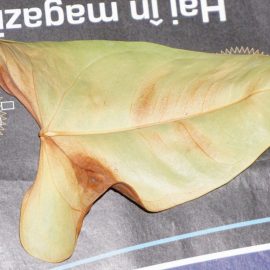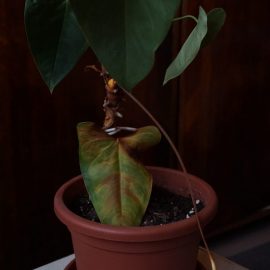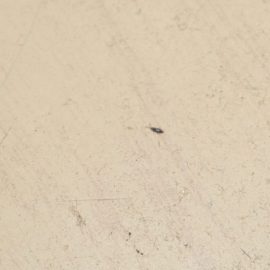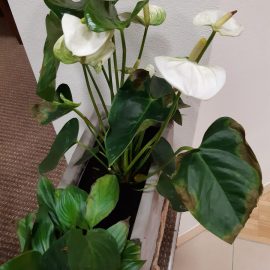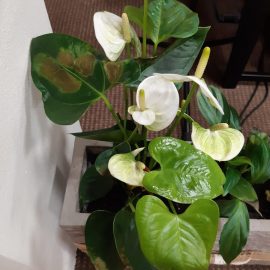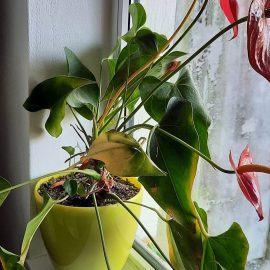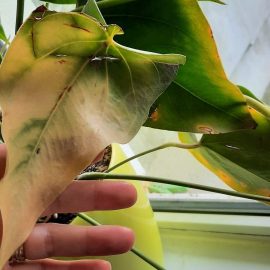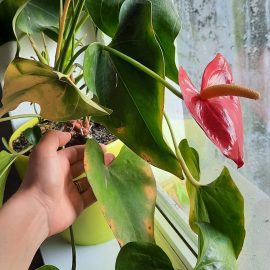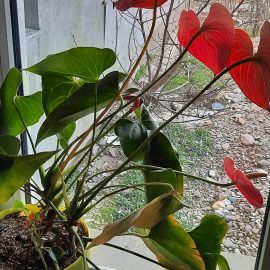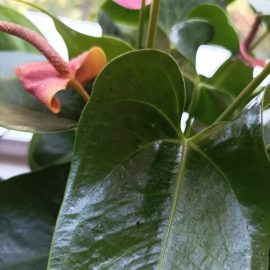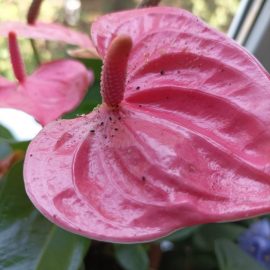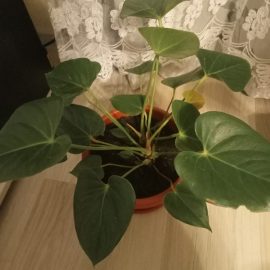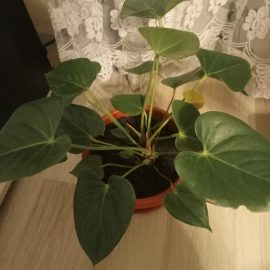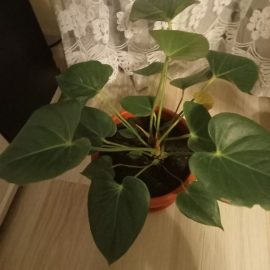Anthurium, plant care and growing guide
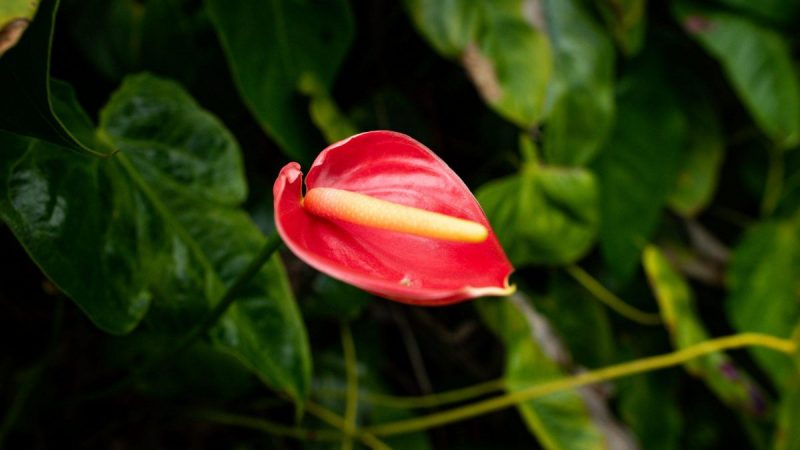
Anthurium ( Anthurium sp. ) is a plant native to South America, popularly known as the “Flamingo flower”. It is a decorative plant and it is usually used as a houseplant. The leaves are dark green and have the shape of a heart or a spear. The flowers are small, clustered on a fleshy axis called spadix. The spadix is covered with a colorful bract called the spathe, which is the decorative part of the plant. The Anthurium plant can bloom all year round if it has the necessary environmental conditions.
Species and varieties
- Anthurium andraeanum – the leaves are dark green, ovate-cordate. The back of the leaves is waxy and colored in intense red.
- Anthurium scherzerianum – the leaves are elliptical-lanceolate, and the spadix is curved, with an intense red spathe.
- Anthurium veitchii – the leaves are green-blue and large.
- Anthurium crystallinum – the leaves are large, velvety, and green with silver veins.
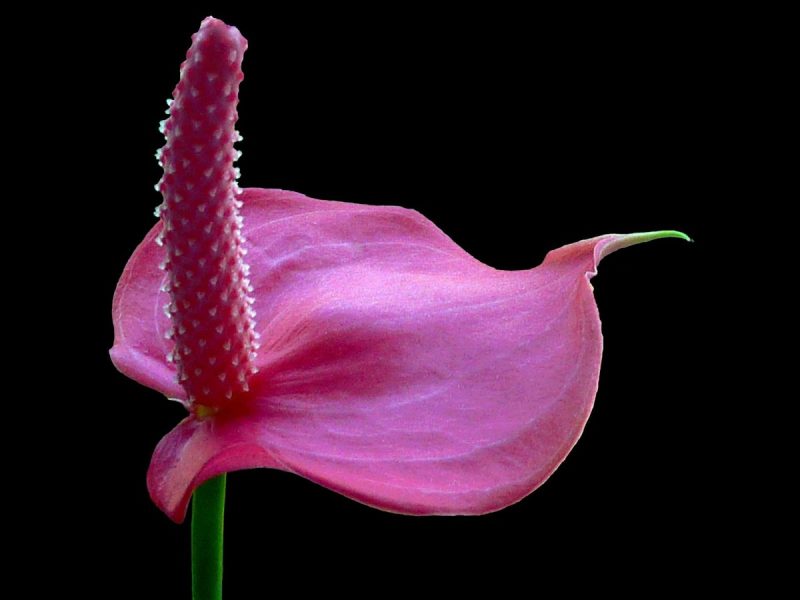
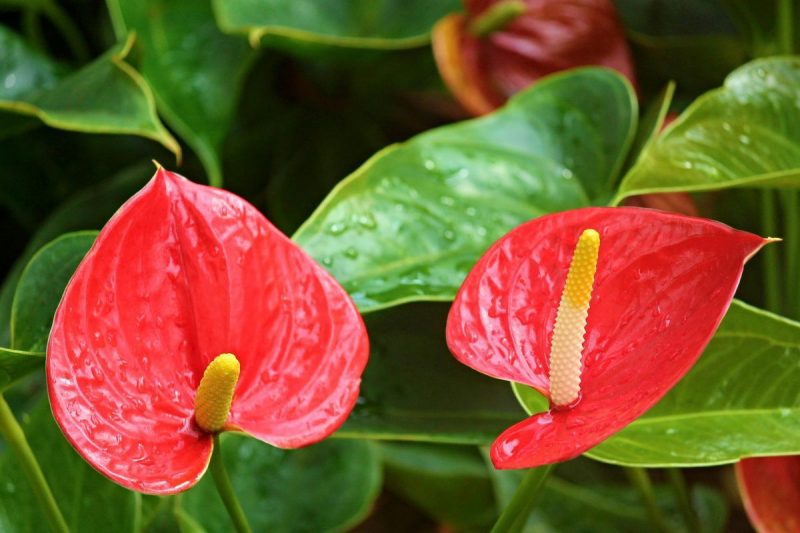
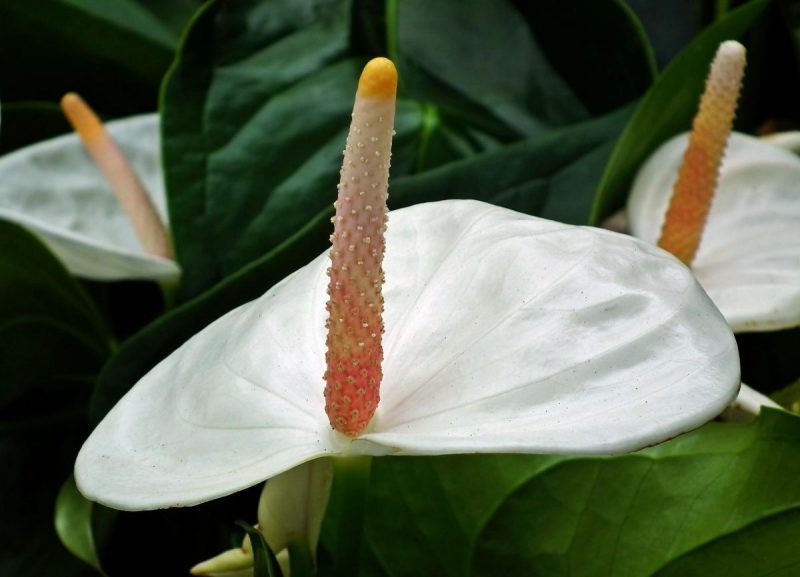
Environmental conditions
Light. Anthurium likes light and prefers bright places, but it should not be exposed directly to sunlight. It can also be placed in a room with less light, but it will not bloom as much and the growth will be reduced.
Temperature. The optimum temperature in summer is between 25-28° C, and during winter the temperature mustn’t drop below 15° C.
Humidity. Anthurium needs high atmospheric humidity.
Substrate. It must have a good drainage capacity and a slightly acidic pH, a suitable option being the mixture of forest soil and peat.
Recommended products
-
You can find products on a different store
Change Store -
You can find products on a different store
Change Store -
You can find products on a different store
Change Store -
You can find products on a different store
Change Store -
You can find products on a different store
Change Store -
You can find products on a different store
Change Store -
You can find products on a different store
Change Store -
You can find products on a different store
Change Store -
You can find products on a different store
Change Store -
You can find products on a different store
Change Store -
You can find products on a different store
Change Store -
You can find products on a different store
Change Store -
You can find products on a different store
Change Store -
You can find products on a different store
Change Store -
You can find products on a different store
Change Store -
You can find products on a different store
Change Store -
You can find products on a different store
Change Store -
You can find products on a different store
Change Store -
You can find products on a different store
Change Store -
You can find products on a different store
Change Store -
You can find products on a different store
Change Store -
You can find products on a different store
Change Store -
You can find products on a different store
Change Store -
You can find products on a different store
Change Store
Watering
During the active growth period (March-September), watering should be done regularly, preferably with rainwater. The soil must be kept permanently moist. Still, excessive watering can cause the leaves to turn yellow. Starting with October, the plant should be watered less often. Atmospheric humidity must be kept high by spraying the leaves or by placing the pot on a tray with gravel.
Fertilization
It should be done between March and September with a fertilizer designed for decorative flowering plants. The administration of fertilizers helps the plant to have abundant flowers. It is recommended to wipe the leaves with a sponge or a damp cloth.
Recommended products
-
You can find products on a different store
Change Store -
You can find products on a different store
Change Store -
You can find products on a different store
Change Store -
You can find products on a different store
Change Store -
You can find products on a different store
Change Store -
You can find products on a different store
Change Store -
You can find products on a different store
Change Store -
You can find products on a different store
Change Store -
You can find products on a different store
Change Store -
You can find products on a different store
Change Store -
You can find products on a different store
Change Store -
You can find products on a different store
Change Store -
You can find products on a different store
Change Store -
You can find products on a different store
Change Store -
You can find products on a different store
Change Store -
You can find products on a different store
Change Store -
You can find products on a different store
Change Store -
You can find products on a different store
Change Store -
You can find products on a different store
Change Store -
You can find products on a different store
Change Store -
You can find products on a different store
Change Store -
You can find products on a different store
Change Store -
You can find products on a different store
Change Store -
You can find products on a different store
Change Store
Repotting
It is done once every two or three years, in the spring. The pot in which it will be repotted must have a diameter that is 2-3 cm larger than the volume of soil needed to cover the roots, as well as drainage holes to avoid water stagnation in the substrate. After repotting, the plant should be watered with a larger volume of water.
Propagation
The easiest way to propagate Anthurium is by dividing in early spring.
Recommended products
-
You can find products on a different store
Change Store -
You can find products on a different store
Change Store -
You can find products on a different store
Change Store -
You can find products on a different store
Change Store -
You can find products on a different store
Change Store -
You can find products on a different store
Change Store -
You can find products on a different store
Change Store -
You can find products on a different store
Change Store -
You can find products on a different store
Change Store -
You can find products on a different store
Change Store -
You can find products on a different store
Change Store -
You can find products on a different store
Change Store -
You can find products on a different store
Change Store -
You can find products on a different store
Change Store -
You can find products on a different store
Change Store -
You can find products on a different store
Change Store -
You can find products on a different store
Change Store -
You can find products on a different store
Change Store -
You can find products on a different store
Change Store -
You can find products on a different store
Change Store -
You can find products on a different store
Change Store -
You can find products on a different store
Change Store -
You can find products on a different store
Change Store -
You can find products on a different store
Change Store
Diseases and pests
The plant is exposed to rotting of the root, caused by excess moisture in the substrate. Among the pests it is most prone to be infested by, the most common are mealybugs.














































































































































































































































































































































































































































